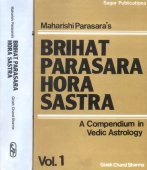Bodhidharma, Daruma, Tamo: 7 definitions
Introduction:
Bodhidharma means something in Buddhism, Pali, Hinduism, Sanskrit, biology. If you want to know the exact meaning, history, etymology or English translation of this term then check out the descriptions on this page. Add your comment or reference to a book if you want to contribute to this summary article.
In Buddhism
General definition (in Buddhism)
Source: Buddhist Door: GlossaryAn Indian missionary monk who came to China in 600 A.D., regarded as the founder of the Chan (Zen) School of Buddhism in China, i.e. the First Patriarch.Source: WikiPedia: BuddhismBodhidharma (c. early 5th century CE) was the Buddhist monk traditionally credited as the transmitter of Zen to China.
Biology (plants and animals)
Source: Google Books: CRC World Dictionary (Regional names)1) Tamo in India is the name of a plant defined with Brucea javanica in various botanical sources. This page contains potential references in Ayurveda, modern medicine, and other folk traditions or local practices It has the synonym Gonus amarissimus Lour. (among others).
2) Tamo in Philippines is also identified with Syzygium malaccense It has the synonym Eugenia purpurascens Baill. (etc.).
Example references for further research on medicinal uses or toxicity (see latin names for full list):
· J. Cytol. Genet. (1990)
· Journal of the Arnold Arboretum (1938)
· Mem. Acad. Sc. Lisboa (1872)
· Philippine Journal of Science (1915)
· Journal of Ethnopharmacology (2009)
· Species Plantarum (1753)
If you are looking for specific details regarding Tamo, for example pregnancy safety, diet and recipes, chemical composition, health benefits, extract dosage, side effects, have a look at these references.

This sections includes definitions from the five kingdoms of living things: Animals, Plants, Fungi, Protists and Monera. It will include both the official binomial nomenclature (scientific names usually in Latin) as well as regional spellings and variants.
Languages of India and abroad
Sanskrit dictionary
Source: Cologne Digital Sanskrit Dictionaries: Monier-Williams Sanskrit-English Dictionary1) Tamo (तमो):—[from tam] in [compound] for mas.
2) Bodhidharma (बोधिधर्म):—[=bodhi-dharma] [from bodhi > budh] m. Name of a Buddhist patriarch (whose original name was Bodhi-dhana), [cf. Lexicographers, esp. such as amarasiṃha, halāyudha, hemacandra, etc.]
[Sanskrit to German]
Sanskrit, also spelled संस्कृतम् (saṃskṛtam), is an ancient language of India commonly seen as the grandmother of the Indo-European language family (even English!). Closely allied with Prakrit and Pali, Sanskrit is more exhaustive in both grammar and terms and has the most extensive collection of literature in the world, greatly surpassing its sister-languages Greek and Latin.
Kannada-English dictionary
Source: Alar: Kannada-English corpusDaruma (ದರುಮ):—
1) [noun] moral or religious righteousness.
2) [noun] moral standards.
3) [noun] Yama, the divine law-giver.
4) [noun] a religious discourse.
5) [noun] an earning of religious merit (as by leading pure moral and religious life).
Kannada is a Dravidian language (as opposed to the Indo-European language family) mainly spoken in the southwestern region of India.
See also (Relevant definitions)
Partial matches: Bodhi, Dharma, Tarma.
Full-text (+79): Tamobhid, Tamohara, Tamonud, Tamovikara, Tamolipti, Tamoguna, Tamojyotis, Tamobhuta, Tamomani, Tamovrita, Tamonuda, Tamopaha, Tamoghna, Nuda, Tamondhakarabhumi, Tamorivivara, Tamomayikri, Tamori, Tamorupin, Tamonishtha.
Relevant text
Search found 74 books and stories containing Bodhidharma, Bodhi-dharma, Daruma, Tamo; (plurals include: Bodhidharmas, dharmas, Darumas, Tamos). You can also click to the full overview containing English textual excerpts. Below are direct links for the most relevant articles:
Zen Buddhism – Japan (The Direct Method to < [July – September, 1994]
Buddhist China and South India < [October – December, 1988]
'East and West in Religion' < [September-October 1934]
Dhyana in the Buddhist Literature (by Truong Thi Thuy La)
3.4 (a): Bodhidharma and Hui K’o (3rd–4th century CE) < [Chapter 3 - The Dhyāna in Mahāyāna Literature]
3.3 (a): The Origin of the Transmission (of Enlightenment in India) < [Chapter 3 - The Dhyāna in Mahāyāna Literature]
3.2 (a): The Dhyāna in the Laṅkāvatāra sūtra < [Chapter 3 - The Dhyāna in Mahāyāna Literature]
Buddha-nature (as Depicted in the Lankavatara-sutra) (by Nguyen Dac Sy)
2.2. Chan and the Laṅkāvatāra-sūtra < [Chapter 6 - Further Development of the Thought of Buddha-nature in China]
2.1. The Thought of Buddha-nature in Chan < [Chapter 6 - Further Development of the Thought of Buddha-nature in China]
2.3. The Buddha-nature in Gongan and Mozhao Chan < [Chapter 6 - Further Development of the Thought of Buddha-nature in China]
The Tattvasangraha [with commentary] (by Ganganatha Jha)
Verse 97-100 < [Chapter 3 - Dealing with the doctrine of both God and Primordial Matter (prakṛti)]
Garga Samhita (English) (by Danavir Goswami)
Verse 5.18.10 < [Chapter 18 - Uddhava Hears the Gopīs’ Words and Returns to Mathurā]
Verse 1.11.45 < [Chapter 11 - Description of Śrī Kṛṣṇacandra’s Birth]
Verse 1.1.6 < [Chapter 1 - Description of Śrī-Kṛṣṇa’s Glories]
Shrimad Bhagavad-gita (by Narayana Gosvami)
Verse 14.8 < [Chapter 14 - Guṇa-traya-vibhāga-yoga]
Verse 16.22 < [Chapter 16 - Daivāsura-sampada-yoga]
Verse 14.13 < [Chapter 14 - Guṇa-traya-vibhāga-yoga]
Related products
